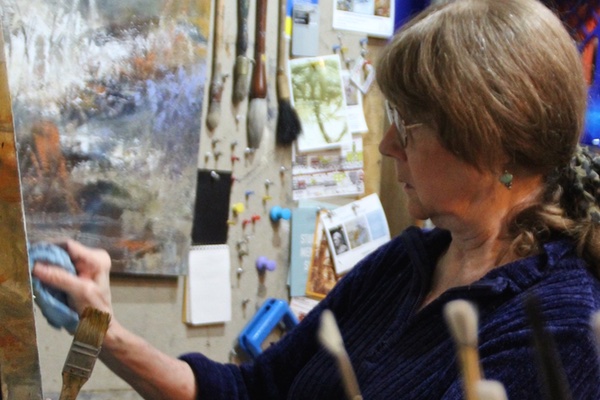Interview with Kathy Blankley Roman
See her work in WTP Vol. III #2 and Vol. VI #3
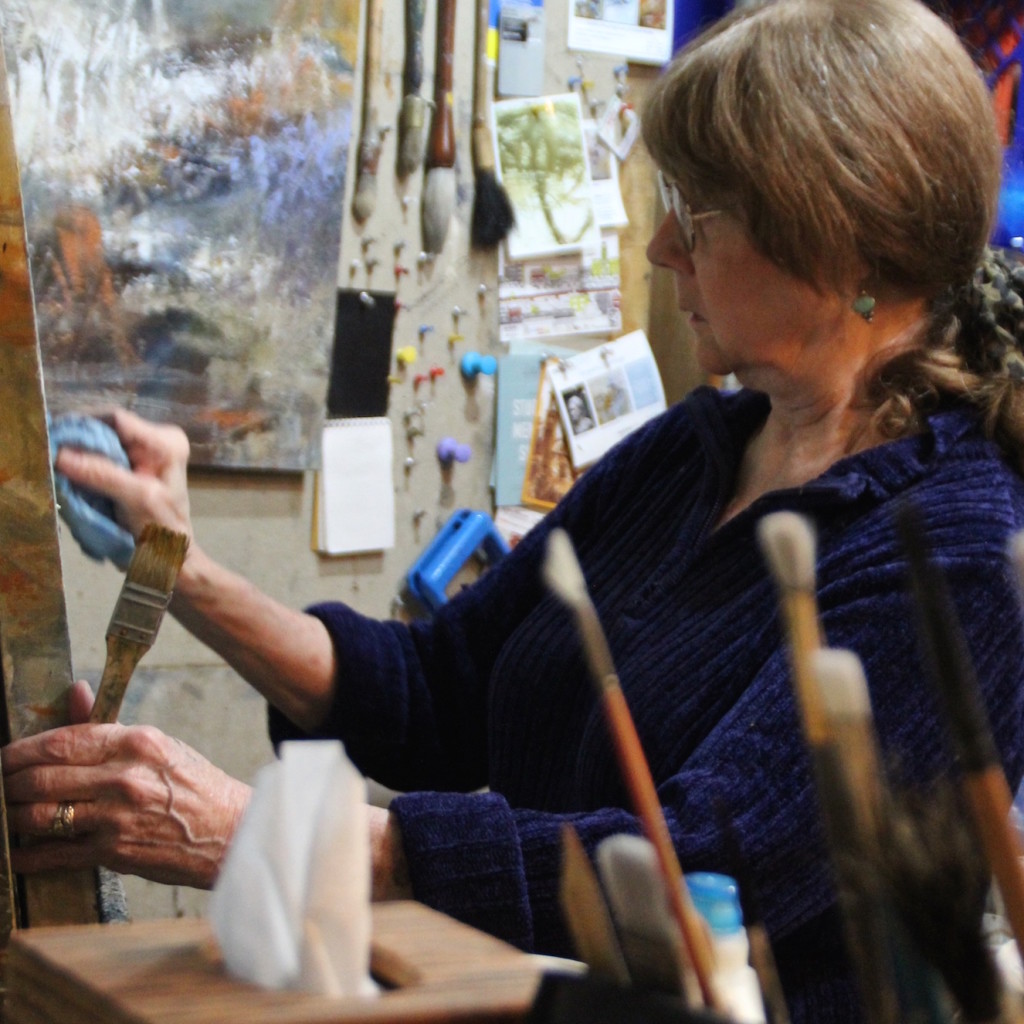
What are you working on in your studio right now?
I’m just getting back to studio time after a brief hiatus, dealing with putting a solo show together and building a website. In my acrylic studio, I have started to go back into an old painting that I wasn’t quite pleased with. It has now turned into something completely different, offering more options. In my oil and wax studio, there are several pieces that have been drying and are ready to go back into.
The work featured in The Woven Tale Press are beautiful examples of your oil-and-cold-wax technique. Can you tell us a little about this process?
Cold wax medium is a paste that is made by mixing beeswax with a solvent. I mix this in varying proportions with oil paint and apply it to the surface with a scraper or palette knife. These paintings are done by applying thin and thick, opaque and transparent layers and then impressing texture or scraping into the paint, or removing some of it with solvent. Sometimes an oil medium may be used to make the paint more transparent or shiny or to extend it, or I may use dry pigment or charcoal with the wax in place of paint or just dropped and pressed onto the surface. I might even use solvent to remove a layer I don’t like, or totally cover it with the next layer of paint. It is all intuitive…the painting develops as I go. The paintings are left to dry between layers anywhere from an hour or so to several days before proceeding to the next. The amount of drying time between layers affects what can be done, i.e. working into wetter or drier paint produces different effects and surfaces. It is not a technique that can be rushed, as I discovered after producing a lot of mud, so I always have several pieces, at one stage or another, in process at the same time. The wax produces a more matte surface than the oil paint alone, which is one of the qualities of this medium that I like.
How did you come about combining these two naturally opposing mediums and what is it about this combination that attracts you?
Actually, I saw some of the paintings by fellow expressive abstract painters, Lisa Boardwine and Rebecca Crowell and others, and asked them how they achieved that look. I saw a quality of mark and surface that was different from anything else I have seen. The luminosity and richness of the surface, the history, texture and depth that can be achieved are what drew me to it; and then there is the physicality of applying the paint and engagement of the surface and the experimental nature of the technique that I find exciting and extremely satisfying to do.
What other mediums do you work in?
Acrylics with mixed drawing media is my primary medium and I spend most of my time in the studio with that. These paintings are much larger than either my oils or encaustics and allow me to stretch and be more physical when painting. They are intuitive and painted in many layers, as are all of my works. I also paint with encaustic, an ancient art form that uses molten beeswax, pigment and resin as the painting medium. This too is done in layers, in this case with natural, pigmented or tinted wax, opaque or transparent, that can be worked to be either highly textured or smooth as glass. Heat is used – heat gun or blowtorch – to fuse between each layer and then I scrape back to reveal subtleties that lie beneath, the marks enhanced by the translucent quality of the beeswax.
There seems to be a theme here…I guess I like to work in layers that I can scrape back into!
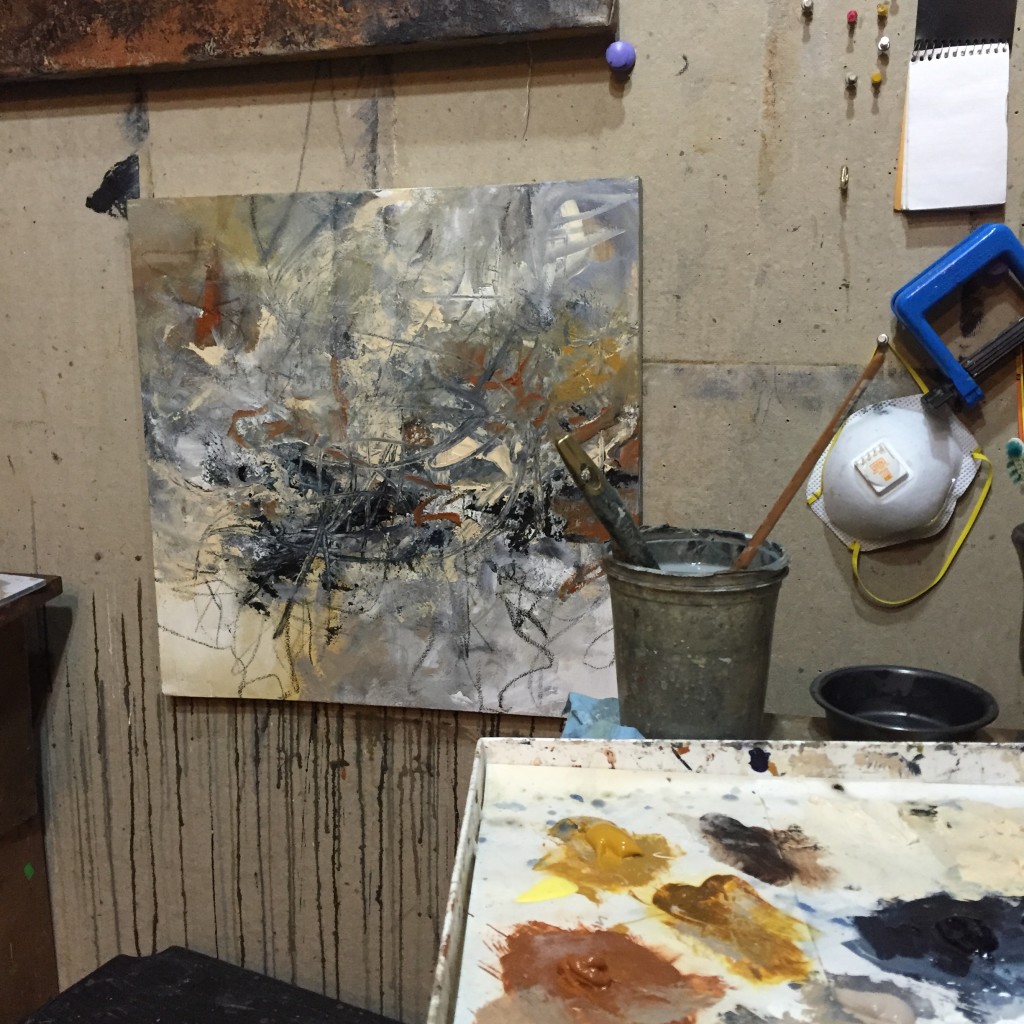
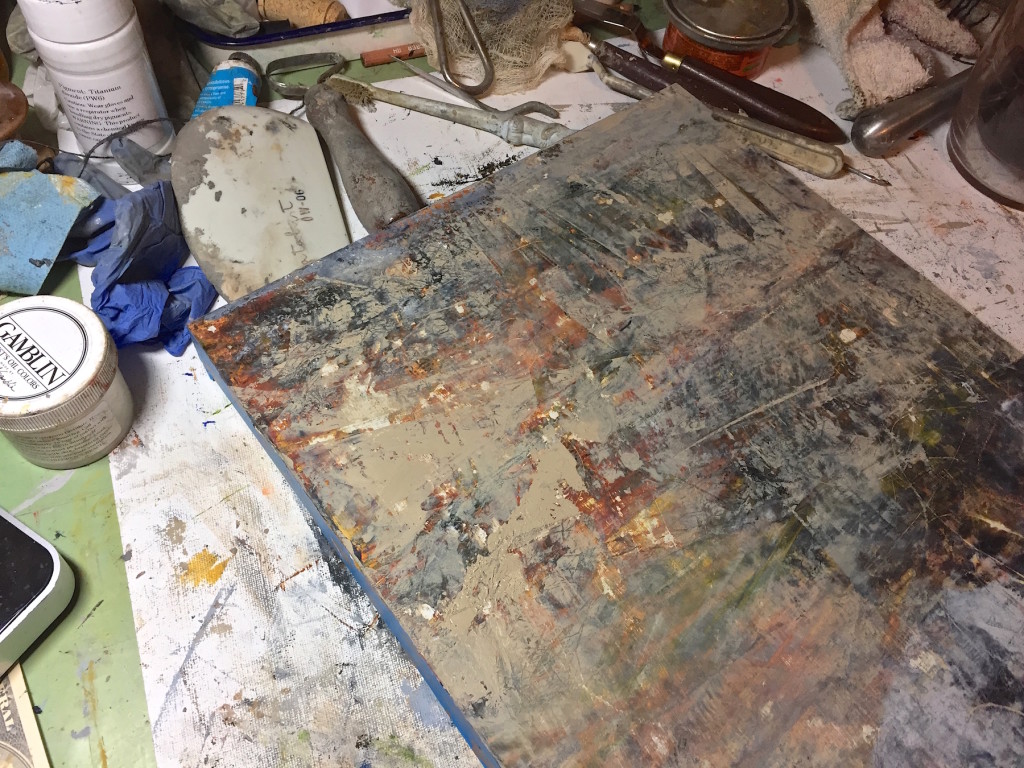
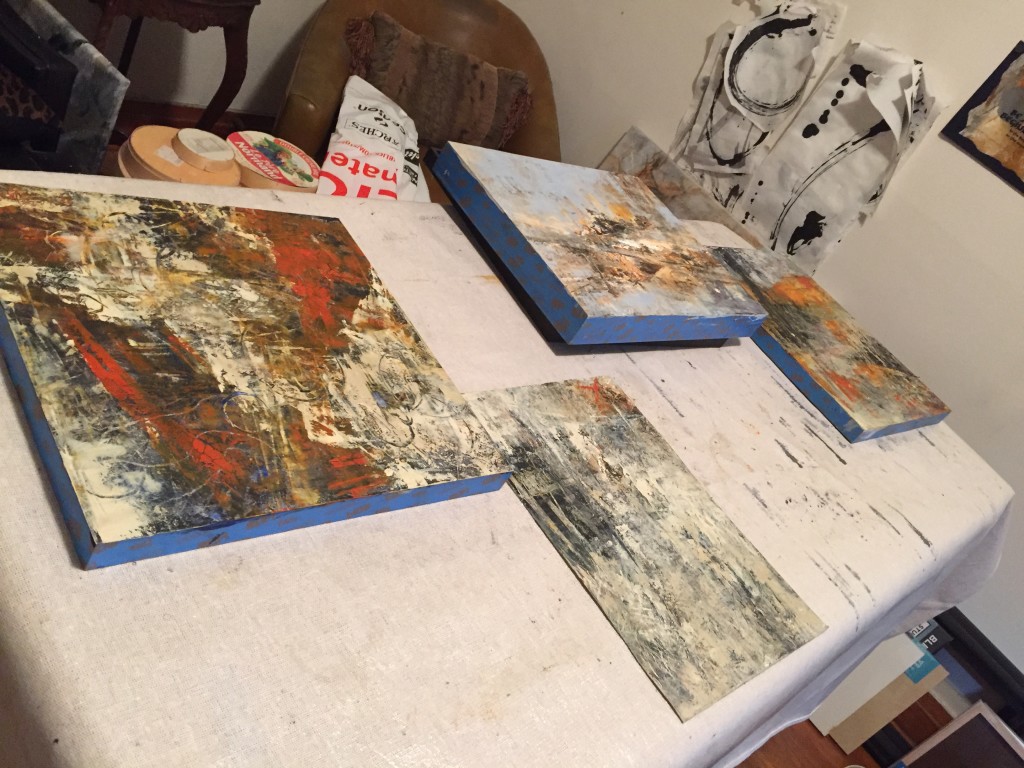
What does your typical studio day look like?
On a “painting” day, first I put the water on for coffee. Then I usually mess around with my paints and tools for a bit, decide whether to go back into a painting in progress or start a new one, choose the colors I will start with, squeeze them out on the palette…just a process that gets me settled in and present and focused on starting. I may turn on some music, depending on my mood…more often if I feel like working “up beat”, and then start…with scribbles or big strokes. On music days, I tend to move around and hum or sing along to the music as I paint. Other times, it is silence that I prefer. When working with encaustic or oil and wax, I tend to prefer silence, probably because the pieces are small and don’t really allow for large movements and I can’t move with the music, which then seems superfluous. And then in no time it seems, it is dark outside and I am reminded to check on the time when I may quit and clean up or continue painting…often going back to do “just one more thing” before quitting may end up taking another hour or more.
And then there are days when I will just sit and look at the work that is hanging on my “wall of consideration for finish”. These are paintings that I have left to sit, either because they were definitely not finished or were put aside because I was not sure if they were or what they might need to be resolved. And I walk around and I look and absorb and think. Sometimes I will come up with a direction for some, or not. This is one of the few times that I intentionally try to plan a direction for a painting. It is a valuable part of my creative process…the down time when certain decisions are made.
The spirit of experimentation always seems to be around. Have you tried something new recently?
I am always on the lookout for new techniques or materials. Oil and cold wax is my most recent new technique and I am still learning.
How do you keep motivated?
The motivation is always there, but there are times when nothing seems to go right. Painting with acrylics is my major art form but when I “dry up”, I will switch it up by working in another media for a while…encaustic and/or oil and wax. While my process of layering and scraping is basically the same, the physical properties of each medium are different and therefore they handle differently, each requiring a different technique. It kind of rewires my brain. That shift tends to be enough to break up the block. I also will take a course now and then to “shake things up”. A new technique or way of approaching a project, a workshop in advanced or alternate techniques in expressive painting, oil and cold wax or encaustics, or just plain drawing tends to be just the thing to jump start my creative process.
How has your work changed in the past few years?
My acrylic paintings have developed more richness and depth in the last year. The layers are more evident often appearing translucent and I have extended my quiet, earth tone palette to include some brighter colors. That and by adding more texture, the surfaces have developed more of a richness and history. Much of that has been influenced by the introduction of oil and cold wax to my repertoire. I have also been using a lot more gestural marks and strokes, lending more of a calligraphic feel to some of my paintings. I have found that as I learn to work in new media, elements of the new technique gets translated into my acrylic painting and changes it somewhat…and vice versa. They all feed each other, which keeps the process fresh and constantly evolving.
What other artists’ works do you have or wish you could have displayed in your own home?
In an imaginary home that has the wall space…Rauschenberg, Motherwell, Van Gogh, Monet and living artists Kazuaki Tanahisi, Lisa Boardwine and Michael Dubina. There are more, but these are the ones that come immediately to mind.

